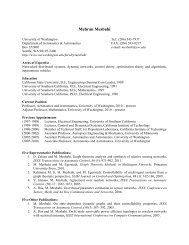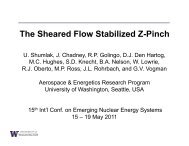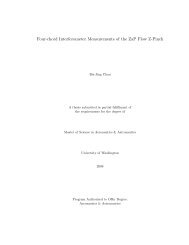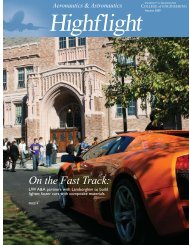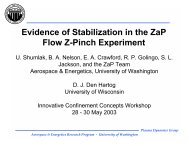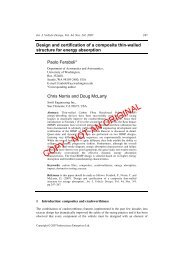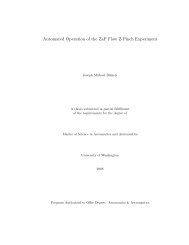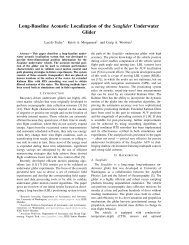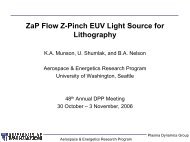Distributed Reactive Collision Avoidance - University of Washington
Distributed Reactive Collision Avoidance - University of Washington
Distributed Reactive Collision Avoidance - University of Washington
You also want an ePaper? Increase the reach of your titles
YUMPU automatically turns print PDFs into web optimized ePapers that Google loves.
10<br />
paths dynamically for the vehicles. While most <strong>of</strong> the computations are distributed, a central<br />
server is still required to make the trades. Additionally, no guarantee has been made<br />
that a collision-free set <strong>of</strong> paths will be found.<br />
The authors <strong>of</strong> [27] also use a negotiation process to optimize collision avoidance maneuvers,<br />
but another algorithm must be present to give collision-free paths for the vehicles<br />
to start from for the guarantees to work. The idea is that this other algorithm need not be<br />
optimal, but merely feasible. Then the second stage enables the vehicles to negotiate a more<br />
optimal solution derived from the first. The algorithm for finding a set <strong>of</strong> feasible paths is<br />
not given, assuming instead that one <strong>of</strong> the other approaches discussed here will suffice.<br />
A major improvement in the computation time <strong>of</strong> optimization methods is shown in<br />
[28], which uses satisficing game theory to make a truly decentralized optimization scheme.<br />
This algorithm is efficient enough to make real-time computation reasonably scalable to<br />
large numbers <strong>of</strong> vehicles. The price paid for efficient computation is a loss <strong>of</strong> the safety<br />
guarantees, as simulation results show that collisions are rare, but that they do occur.<br />
In [29], a distributed collision avoidance algorithm with guaranteed safety is presented<br />
for a homogeneous group <strong>of</strong> n aircraft. This prescribed maneuver approach involves two<br />
discrete heading and speed changes for each aircraft, where each aircraft turns the same<br />
way. The method is based upon perturbations from an exact conflict, where all vehicles<br />
are headed toward a single collision point. This algorithm was extended in [30] to work in<br />
3D and to account for bounded acceleration. Since the algorithm is computed only once,<br />
it is unclear how it could account for a dynamically changing environment where vehicles<br />
are not necessarily capable <strong>of</strong> performing the exact maneuver prescribed. Additionally, the<br />
algorithm may run into trouble with extremely inexact conflicts, since it is based upon a<br />
transformation to an exact conflict.<br />
Probably the safest collision avoidance algorithm to date is that <strong>of</strong> [31], which considers<br />
a homogeneous group <strong>of</strong> constant-speed unicycles. This method uses a completely decentralized,<br />
prescribed maneuver algorithm for n vehicles which has an absolute guarantee <strong>of</strong><br />
safety in the presence <strong>of</strong> constrained control authority. While this solution might appear



